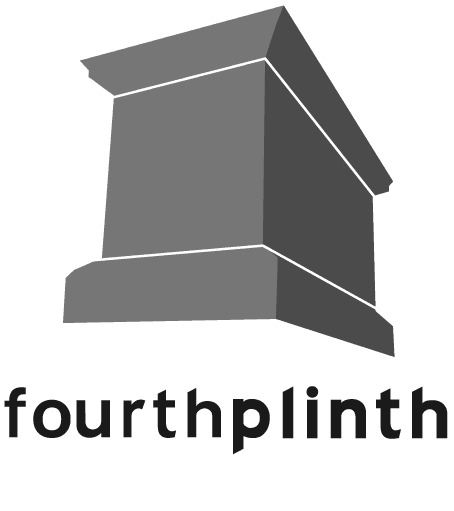Alison Lapper Pregnant & Hotel for the Birds Chosen for Fourth Plinth
Commissioning Group selects two works to jump-start programme

|
Commissioning Group selects two works to jump-start programme |
|
|||
Commissioning Group selects two works to jump-start programme |

Alison Lapper Pregnant & Hotel for the Birds Chosen for Fourth Plinth
Commissioning Group selects two works to jump-start programme
Sandy Nairne
Director of the National Portrait Gallery
Michaela Crimmin
Head of Arts, RSA
Greg Hilty
Director, Visual Arts and Literature, Arts Council England, London
Diane Henry Lepart
Banker, member of The Mayor's Cultural Strategy Group
James Lingwood
Director, Artangel Trust
Sunand Prasad
Architect, Partner in Penoyre and Prasad
Richard Rieser
Disability advisor
Jon Snow
Broadcaster
Sally Williams
Freelance public art consultant
Bill Woodrow
Artist, previously exhibited work on the Fourth Plinth
For the Mayor / GLA:
Justine Simons
Senior Cultural Strategy Officer (Project Lead)
Also for the Fourth Plinth project:
Andrea Schlieker
Curator
Sylvia Lahav
Education Consultant
Kallaway Ltd
Communications Consultants
The Fourth Plinth Commissioning Group has recommended two sculptures for installation on Trafalgar Square's fourth plinth: Marc Quinn's Alison Lapper Pregnant and Thomas Schütte's Hotel for the Birds. London's Mayor Ken Livingstone has endorsed the Commissioning Group's recommendation.
The plan is to install Quinn's work on the plinth in spring 2005. Schütte's sculpture will likely be installed by the summer of 2006. Each piece will remain on the plinth for between 12-18 months.
The decision to recommend two works for the fourth plinth marks a departure for the Commissioning Group, which had originally intended to recommend one piece at this stage.
"Both of these proposals have extraordinary artistic value and merit," said Sandy Nairne, chair of the Commissioning Group. "Though they could not be more different from each other, both works will encourage powerful responses from Londoners and visitors - and they will enhance London's reputation as a leader in the visual arts."
Broadcaster Jon Snow explained that the decision to recommend two works had as much to do with logistics as aesthetics. "The fourth plinth has been empty for three years since the very successful commissions between 1999-2001. The selection of two works at this stage will jump-start the programme and put clear plans in place for installations over the next few years."
Marc Quinn's sculpture, to be constructed in white marble, takes a unique approach to the fourth plinth. "Alison Lapper Pregnant" celebrates the human spirit on a very large scale. "The work considers questions of idealism, heroism, femininity, prejudice and identity," said Greg Hilty, director of visual arts and literature at Arts Council England, London.
"I regard it as a modern tribute to femininity, disability and motherhood. It is so rare to see disability in everyday life - let alone naked, pregnant and proud," said artist Alison Lapper, with whom Quinn collaborated on the piece.
Working in acrylic, Thomas Schütte's use of colour and light and his exploration of the relationship between art and architecture and their relationship to historical monuments led to the recommendation of Hotel for the Birds, according to Andrea Schlieker, curator for the Fourth Plinth Sculpture Commission. "Multi-layered, mysterious, and promising to sparkle like a brightly-coloured jewel, Schütte's utopian architectural vision will have a powerful impact on Trafalgar Square," she said.
Since the proposals were unveiled in December 2003, several thousand people have shared their views on the works themselves and on the idea of having contemporary art on the fourth plinth. More than 4,100 submissions of comment were received through the official website for the Fourth Plinth Sculpture Commission (www.fourthplinth.co.uk). Another 5,000 comments were posted on cards at the National Gallery, where the proposals were displayed until 8 February.
While many respondents criticised the contrast between contemporary art and the architectural, cultural, political and historical associations of Trafalgar Square - the majority of respondents support the programme.
"The debate about public art is one of the most valuable aspects of this project. While no single commission - and no single use for the plinth - will please everyone, work that gets people engaged with this vital public space is extremely valuable," said Nairne.
Nairne pointed out that all six of the short-listed proposals were very strong. "Each artist responded to the challenge of developing work for Trafalgar Square with very compelling ideas. The proposals explored a wide range of issues about public art, public space, monuments and memorials - and we appreciate the artists' interest and commitment," he said.
The Commissioning Group considered the public response to the works along with several other factors in the decision-making process. In addition to feedback from the public, the Group assessed each work's artistic merit, practical feasibility and potential cost.
While preliminary estimates have been developed, final costs for each commission have not yet been determined. Funding for the project so far has come from the GLA and the Arts Council England. The aim is to fund the creation and installation of the artworks from private sponsorship. Now that the works have been selected, the drive to recruit a primary sponsor for each work will begin.